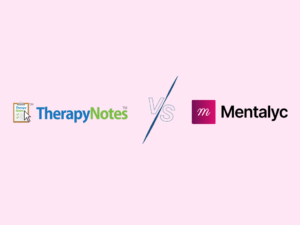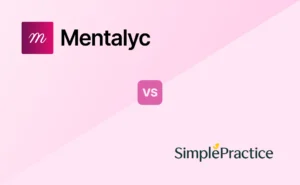The Ritvo Autism Asperger Diagnostic Scale (RAADS-R) is a clinician-administered self-report tool designed to identify autism-related traits in adults—particularly those whose presentations may not have raised diagnostic flags in childhood. It assesses four domains: language, social communication, sensory-motor symptoms, and focused interests. While the RAADS-R is not a diagnostic tool, it provides useful clinical information. It is a useful adjunct to differential diagnoses and supports referrals for formal evaluations with neuropsychology when needed. Although the RAADS-R is not a diagnostic tool, it yields clinically useful information. It is a useful adjunct to differential diagnoses and supporting referrals for more formal evaluation with neuropsychology if that is needed.
You probably have had a client, maybe more than one, who describe feeling “different” their whole life. They may have talked about being awkward in social situations, distressed or overwhelmed by particular sounds or textures, or constantly second-guessing how they come across. While nothing in their chart points to a formal diagnosis, something about their story makes you pause. Research suggests that 50–60% of adults with characteristics of autism remain undiagnosed—especially those without intellectual disabilities, those assigned female at birth, or individuals from marginalized communities. Without recognizing these underlying traits, clients can leave with support plans that don’t fit, or sometimes they can spend years confused about why they don’t “do” typical strategies. Screening tools, including the Ritvo Autism Asperger Diagnostic Scale-Revised (RAADS-R), stand out – not as a replacement for diagnosis, but as a way to better understand what might be happening beneath the surface.
In this guide, we will explain how the tool works, how to use it, and the important information it can provide as part of the assessment process for autism in adults with more nuanced or subtle presentations.
Where the Ritvo Autism Asperger Diagnostic Scale (RAADS-R) Comes From
In 2011, Dr. Ritvo and his colleagues updated an earlier autism screening tool to reflect adults’ experiences better. The result was the RAADS-R, an 80-item questionnaire designed to highlight patterns that may have been missed in childhood—especially in individuals who’ve adapted socially without realizing they were masking core traits. Built with the late-diagnosed adult in mind, it offers clinicians a lens into the subtle, often-overlooked expressions of autism in adulthood.

New! Transfer your notes to EHR with a single click. No more copy-pasting.
Why Clinicians Trust the RAADS-R
The RAADS-R stands out for its accuracy, consistency, and cross-cultural reliability. It’s been translated and used effectively in countries like Japan, Sweden, and Italy, and it performs well across different contexts. Clinicians value it for filling a crucial diagnostic gap: it was designed explicitly for verbal, cognitively typical adults, a population often underserved by other assessments. For clients who appear to “function well” on the surface but privately struggle, the RAADS-R offers a way to put those challenges into a clearer perspective—and opens the door to more informed, compassionate care.
Structure and Administration: The Mechanics of the RAADS-R
Core Components
The RAADS-R consists of 80 statements that clients rate on a four-point Likert scale:
- True now and when I was young (3 points)
- True only now (2 points)
- True only when I was younger than 16 (1 point)
- Never true (0 points)
This developmental perspective is one of the assessment’s key strengths, as it captures both current and historical presentations—crucial for understanding the trajectory of autism characteristics.
Administration Protocol
How we introduce and administer the RAADS-R can significantly affect the accuracy of the results and the client’s feeling of support throughout the process.
- Before the Assessment: Set aside 45–60 minutes for completion. Try to provide a calm, low-stimulation environment—especially for clients sensitive to noise, lighting, or distractions.
- During the Assessment: Be available to clarify confusing items without steering answers. Some clients may need help understanding how a question relates to their daily experience, and a supportive presence can help keep things on track.
- Administration Options:
- Self-administered paper format
- Digital administration (various secure platforms offer RAADS-R implementation)
- Clinician-guided administration for clients who might benefit from clarification
- Support During Administration: Be available to clarify items without leading responses. Some clients may require assistance understanding or contextualizing specific questions within their experiences.
- Post-Assessment Discussion: Schedule time to review and discuss results, focusing not just on scores but on the qualitative information revealed through the assessment process.
A crucial clinical note: self-administration is standard, and research suggests that clinician support during completion can enhance accuracy, particularly for clients with limited insight into their behaviors or difficulty recognizing autism-related traits.
Decoding the RAADS-R Subscales: Domain-Specific Insights
The RAADS-R evaluates four domains aligned with DSM-5 diagnostic criteria for Autism Spectrum Disorder. Understanding these subscales enables more nuanced interpretation:
1. Social Relatedness (39 items)
This domain assesses difficulties with social understanding, reciprocity, and relationship development. It explores:
- Challenges with social reciprocity
- Difficulty interpreting nonverbal social cues
- Reduced interest in peer relationships
- Social anxiety and avoidance behaviors
Clinical relevance: High scores in this domain correlate strongly with DSM-5 Criterion A, which addresses persistent social communication and interaction deficits.
2. Language and Communication (14 items)
This subscale examines both verbal and nonverbal communication patterns:
- Literal interpretation of language
- Difficulties with pragmatic language use
- Challenges with prosody (tone, rhythm, stress patterns in speech)
- Limited or atypical nonverbal communication
Clinical relevance: This domain aligns with components of DSM-5 Criterion A, particularly aspects related to nonverbal communicative behaviors and relationship deficits.
3. Sensory-Motor (20 items)
This domain addresses sensory processing differences and motor coordination:
- Hypersensitivity or hyposensitivity to sensory input
- Sensory-seeking or avoidance behaviors
- Motor coordination challenges
- Difficulties with visuospatial processing
Clinical relevance: These items correspond directly to DSM-5 Criterion B, which addresses restricted, repetitive behavior patterns, specifically hyper- or hypo-reactivity to sensory input.
4. Circumscribed Interests (7 items)
This subscale explores intense, focused interests and insistence on sameness:
- Development of specialized knowledge in specific areas
- Intense focus on particular topics or objects
- Preference for systematic organization
- Resistance to change in routines or environments
Clinical relevance: This domain maps to DSM-5 Criterion B, particularly the components related to highly restricted, fixated interests and adherence to routines.
Understanding these subscales allows for pattern recognition that can guide intervention. For instance, a client with elevated scores in Sensory-Motor but lower scores in Social Relatedness might benefit from sensory-focused interventions while having relatively preserved social functioning.
Score Interpretation: Beyond the Numbers
The RAADS-R yields a total score (range: 0-240) and individual subscale scores. While these numbers provide valuable clinical information, interpretation requires quantitative and qualitative analysis.
Total Score Thresholds
Research establishes the following interpretive guidelines:
- 0-64; autism characteristics unlikely
- 65-130: Mild to moderate autism characteristics; clinical judgment strongly recommended
- 131-195: Moderate to marked presentation; diagnostic consideration warranted
- 196-240: Significant presentation; further comprehensive assessment advised
The validated threshold score is 65, with a sensitivity of 97% and a specificity of 100% in the original validation study. However, clinical context is essential—multiple factors can influence scoring.
Beyond Total Scores: Profile Analysis
Profile analysis often provides more clinically useful information than the total score alone:
- Pattern Recognition: Distinctive patterns across subscales can indicate different presentations of autism
- Item-Level Analysis: Particular responses may highlight specific areas requiring intervention
- Developmental Perspective: Examining where clients endorsed “true now” versus “true when younger” provides insight into developmental trajectory and compensation
Clinical Considerations in Interpretation
Several factors should inform your interpretation:
- Gender Differences: Research indicates that women and those assigned female at birth often score lower than males despite similar levels of functional impairment, suggesting potential bias in the instrument. Consider using lower thresholds (approximately 50-55) when assessing women.
- Cultural Factors: Cultural norms can influence responses, particularly on social and communication items. Interpret results within the client’s cultural context.
- Co-occurring Conditions: Anxiety, depression, ADHD, and other conditions may influence scoring and presentation. Differential diagnosis is essential.
- Masking/Camouflaging: Many adults with autism develop sophisticated compensation strategies that can affect scoring. Deeper questioning about the effort required for social interaction can reveal underlying difficulties.
Case Example: Profile Interpretation
Maya, a 34-year-old marketing professional, completed the RAADS-R as part of a comprehensive evaluation. Her score was 98—above the threshold of 65 but not far beyond. However, her subscale profile revealed:
- Social Relatedness: 42 (moderate elevation)
- Language: 14 (mild elevation)
- Sensory-Motor: 31 (significant elevation)
- Circumscribed Interests: 11 (moderate elevation)
Further exploration revealed significant sensory processing challenges she had developed elaborate strategies to manage throughout her life. Despite her relatively successful social adaptation, maintaining these interactions required substantial conscious effort and resulted in frequent burnout. It’s not unusual for adults—especially women—to develop ways of blending in socially, even while privately managing significant challenges. Over time, this masking can take a real toll and often delays the recognition of underlying neurodivergent traits. How responses cluster across different areas can offer a more complete picture than a single score. Pattern analysis usually reveals insights that make the assessment more meaningful—and ultimately more useful—in the context of a full evaluation.
How responses cluster across function areas can reveal much more than a total score. This profile analysis often sheds light on a client’s lived experience in ways that guide clearer, more compassionate care.
Bringing the RAADS-R Into a Broader Diagnostic Picture
While valuable, the RAADS-R works best as part of a broader, multi-method assessment strategy. A thorough adult autism evaluation typically includes the following:
Essential Components of Adult Autism Assessment
- Structured Clinical Interview: Focusing on developmental history, current functioning, and the impact of potential autism characteristics on daily life
- Collateral Information: When possible, input from parents or others who knew the individual in childhood provides crucial developmental information
- Additional Standardized Measures: Consider complementary assessments:
- Autism Spectrum Quotient (AQ)
- Social Responsiveness Scale-2 (SRS-2) Adult Form
- Adult Asperger Assessment (AAA)
- Autism Diagnostic Observation Schedule-2 (ADOS-2) Module 4
- Differential Diagnostic Assessment: Screening for co-occurring conditions, including:
- Anxiety disorders
- Depression
- ADHD
- OCD
- Personality disorders
- Trauma-related conditions
- Functional Impact Assessment: Evaluating how symptoms affect:
- Occupational functioning
- Relationship development and maintenance
- Independent living skills
- Quality of life
RAADS-R Strengths and Limitations
Understanding the RAADS-R’s strengths and limitations enhances responsible clinical use of the instrument.
Strengths:
- High sensitivity and specificity for detecting autism in adults without intellectual disability
- Captures developmental course of symptoms
- Provides insight into subjective experiences
- Relatively quick administration
- Strong empirical validation
Limitations:
- Limited utility for individuals with intellectual disability
- Potential gender bias in threshold scores
- Self-report format susceptible to limited self-awareness
- Cultural considerations may affect the interpretation
- May not fully capture compensation strategies (“masking”)
Clinical Applications: The RAADS-R in Practice
Who Benefits Most from the RAADS-R?
The RAADS-R is particularly valuable for assessing:
- Late-Diagnosed Adults: Those who have developed strong compensatory mechanisms that might obscure classic presentations
- Women and AFAB Individuals: Who often present with more subtle or different manifestations of autism
- Individuals with Co-occurring Conditions: Where other diagnoses may overshadow autism characteristics
- High-achieving adults Who have developed strategies to navigate social demands despite underlying challenges
Therapeutic Applications Beyond Diagnosis
The RAADS-R offers value beyond formal diagnosis:
- Therapeutic Direction: Subscale profiles can guide intervention priorities
- Client Self-Understanding: The assessment process often provides valuable insight for clients
- Strength Identification: Some items highlight potential strengths associated with autism, such as attention to detail
- Treatment Planning: Results can inform accommodations and support strategies
Ethical Considerations
As with any assessment tool, ethical application is paramount:
- Informed Consent: Ensure clients understand the purpose, limitations, and potential outcomes of assessment
- Diagnostic Humility: Acknowledge the complexity of adult autism presentation and avoid overly definitive conclusions
- Collaborative Approach: Involve clients as active participants in the interpretation process
- Cultural Sensitivity: Consider how cultural factors might influence both presentation and reporting
- Support Through Process: Recognize that the assessment process itself can be emotionally significant
Conclusion: The RAADS-R as a Bridge to Understanding
The RAADS-R can do more than guide clinical decisions—it can offer clarity to someone searching for answers for most of their life. For many adults, finally having words to describe their experiences can feel like fresh air. Using tools like this thoughtfully creates space for understanding and connection, not just diagnosis. It’s one way we can help clients feel truly recognized, especially those who’ve spent much of their lives searching for answers without finding a clear one. When we take the time to really listen, without assumptions, we open the door to a more accurate and compassionate understanding of their experience. Neurodivergent traits aren’t flaws to correct—they’re simply part of how someone moves through the world.
Tools like the RAADS-R remind us that behind every score is a story. At Mentalyc, we’re committed to helping therapists capture those stories—accurately and compassionately. See how Mentalyc can make note-taking feel less like a task—and more like part of your care. Sign up for a free trial today!
Clinician’s FAQs: Practical Application of the RAADS-R
How long does the RAADS-R typically take to complete?
Most clients complete the assessment in 30 to 45 minutes, although some individuals may need up to 60 minutes.
Can the RAADS-R be administered remotely?
Yes, it works effectively on secure online platforms. However, it’s important to note that providers generally prefer offering in-person services. This allows them to observe how individuals interact with the questions and clarify any confusion.
How does the RAADS-R compare to other adult autism assessments? The RAADS-R provides a more comprehensive understanding than short quizzes like the AQ, especially concerning an individual’s past experiences and how they perceive the world. While it doesn’t involve direct observation like the ADOS-2, it is valuable, particularly for individuals who have learned to mask their traits or do not fit the typical profile.
What should I do if a client scores just below the threshold but presents with autism characteristics?
Numbers can be helpful, but they don’t provide the complete picture. Masking, gender differences, and varying scores across assessment sections can influence results. Your clinical judgment is crucial—consider the RAADS-R as one piece of the puzzle rather than the final determination.
Is specialized training required to administer the RAADS-R?
No formal certification is necessary, but clinicians must understand adult autism presentation and be familiar with the instrument’s psychometric properties.
Resources
ABA Centers of America. (2023, October 3). RAADS-R Autism Test: History and Definitions. Just a moment… https://www.abacenters.com/raads-r-autism-test-history-and-definitions/
ABA Centers of Florida. (2023, June 29). RAADS-R Test: Understanding the Test for Better Results. https://abacentersfl.com/blog/raads-r-test/
Carebot ABA. (2023, June 15). RAADS-R Test: A Comprehensive Guide. Just a moment… https://carebotaba.com/raads-r-test/
Carry on Therapy. (2025, March 19). RAADS-R Test. https://www.carryontherapy.com/blog/raads-r-test?bd8a0492_page=2
Embrace Autism. (2024, October 29). RAADS–R. https://embrace-autism.com/raads-r/
Gladden, C. (2024, May 21). Understanding the RAADS-R Test: A Guide for Parents. Blue ABA. https://blueabatherapy.com/autism/raads-r-test/
Jones, S. L., Johnson, M., Alty, B., & Adamou, M. (2021). The Effectiveness of RAADS-R as a Screening Tool for Adult ASD Populations. Autism Research and Treatment, 2021, 1-6. https://doi.org/10.1155/2021/9974791
Norman, S. (2024, April 24). What To Know About The RAADS-R Test For Autism. Augmentive: Wellbeing and Performance. https://augmentive.io/blog/raads-r-test-autism
Novo Psych. (n.d.). Ritvo Autism Asperger Diagnostic Scale – Revised (RAADS-R). https://novopsych.com/assessments/diagnosis/ritvo-autism-asperger-diagnostic-scale-revised-raads-r/
Rising Above ABA. (2024, May 6). RAADS-R Test: Shedding Light on Autism Spectrum Disorder. https://www.risingaboveaba.com/autism-blog/raads-r-test
Ritvo, R. A., Ritvo, E. R., Guthrie, D., Ritvo, M. J., Hufnagel, D. H., McMahon, W., Tonge, B., Mataix-Cols, D., Jassi, A., Attwood, T., & Eloff, J. (2010). The Ritvo Autism Asperger Diagnostic Scale-Revised (RAADS-R): A Scale to Assist the Diagnosis of Autism Spectrum Disorder in Adults: An International Validation Study. Journal of Autism and Developmental Disorders, 41(8), 1076-1089. https://doi.org/10.1007/s10803-010-1133-5
Yellow Bus ABA. (2025, March 5). Uncovering Autistic Tendencies: The Power of the Raads-R Test. https://www.yellowbusaba.com/post/raads-r-test
Why other mental health professionals love Mentalyc

“By the end of the day, usually by the end of the session, I have my documentation done. I have a thorough, comprehensive note … It’s just saving me hours every week.”
CDCII

“It’s so quick and easy to do notes now … I used to stay late two hours to finish my notes. Now it’s a breeze.”
Licensed Professional Counselor

“It takes me less than 5 minutes to complete notes … it’s a huge time saver, a huge stress reliever.”
Licensed Marriage and Family Therapist

“Having Mentalyc take away some of the work from me has allowed me to be more present when I’m in session with clients … it took a lot of pressure off.”
LPC






